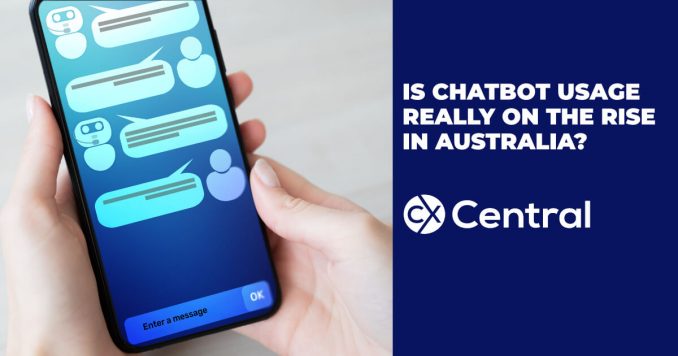
Customer Service Chatbots on the increase in Australia
Previous research by Fifth Quadrant in 2018 revealed that businesses using a chatbot as part of their overall customer experience is expected to increase from 2% to 14% in 2018.
This coincides with the preference for the telephone channel finally showing signs of decline, albeit much slower than was originally forecast.
Unfortunately, Fifth Quadrant did not release a 2019 Contact Centre Benchmark report and there is no evidence yet of plans to release a 2020 report so we are unable to measure if their forecasts were accurate.
The Auscontact Association (the call centre industry body in Australia for those unaware) has also not released any benchmarking data so it’s been left up to the private sector to sep up to the plate and provide industry research information.
In 2019, SMAART Recruitment (a specialist contact centre recruitment agency) released their 2019 Contact Centre Best Practice Report and this is currently the only source for local (Australian) contact centre benchmarking data.
Whilst the report for 2019 mainly focusses on people-related metrics, from the over the 100 Australian call centres surveyed there were some takeaways in relation to technology usage.
With specific relation to whether chatbots are on the increase in Australia, in 2019 just 11.27% of contact centres were using chatbots.
In 2018, Fifth Quadrant forecasted 14% in 2018 so it would appear, based on the available data, that the implementation is not quite as advanced as first predicted.
That said, of course, there were different sample sizes and methodologies so it does make it difficult to compare.
I, and many others I’m sure, wish there were some regular industry reporting we could all rely on but I digress…
Webchat usage in Australia
Some other data that came out of the SMAART Recruitment 2019 report was the usage of webchat.
Webchat, unlike Chatbots which require no human intervention, involves the customer chatting to live customer service agents via a live chat widget on the company website or app.
For the centres offering webchat, 15% of customer interactions are now via webchat however there is no comparison data yet (The 2020 report will be out later this year) so it remains to be seen if this is increasing or decreasing.
What was interesting though, was that as webchat increases:
- 36.59% of centres experienced a decline in call volumes
- 56.10% received increased call volumes
- 7.32% had their call volumes remain the same
In the Zendesk Customer Experience Trends Report 2020, their data suggests that customers using the Zendesk Answer Bot (powered by AI) experienced a threefold increase over the past two years in the number of issues solved without human intervention and that by 2022, 20% of customer service will be handled by conversational agents.
Where is it all heading?
So back to my original statement about chatbots on the increase in Australia, is it something that’s going to continue to increase?
I’m not sure.
Yes, I realise I’m sitting firmly on the fence and as a male, I can assure you that’s quite painful.
There is no question for me that Artificial Intelligence is going to continue to provide exciting opportunities for customer support and of course, the temptation to reduce costs is something every business is grappling with.
As AI technology increases, so too does the ability for chatbots to handle the entire transaction without human intervention and with it, delivering a significant reduction in costs.
But as we’ve seen with the phone channel, customers are also becoming a lot smarter.
Having to ring a call centre is normally the last resort.
They’ll visit a website, search an FAQ page, ask Google, look on YouTube – in fact, they’ll do pretty much anything they can to avoid having to ring a call centre.
And at least in the short term, I suspect the same will occur with chatbots.
It’s just quicker and easier to firstly try and find the information myself.
And last but not least, there is the whole equation of the user experience.
As Jeff Bethos put it so more eloquently than I can (maybe it’s those billions of dollars that helps?) “the best service is no service”.
If someone needs to use webchat or ring the call centre the chances are something has gone wrong or the information the customer requires isn’t readily available.
Maybe fixing that first is a good place to start.
What are your thoughts?
Recommended further reading: How AI is going to directly impact contact centres
Looking for a list of suppliers for Chatbots, Artificial Intelligence, Virtual Assistants and more in Australia? Search the free CX Directory>>>
Want to learn more about Customer Experience? In April 2020 we are running our CX Fundamentals Course delivered by global CX expert Daniel Ord – Learn more>>>





AI chatbots aren’t a replacement for real human interactions, though. Bots are better at augmenting these interactions and are best utilized to simplify tasks and remove repetition from workflows. Human agents should handle conversations where someone is navigating a complex purchase or upgrade or is feeling frustrated or confused.